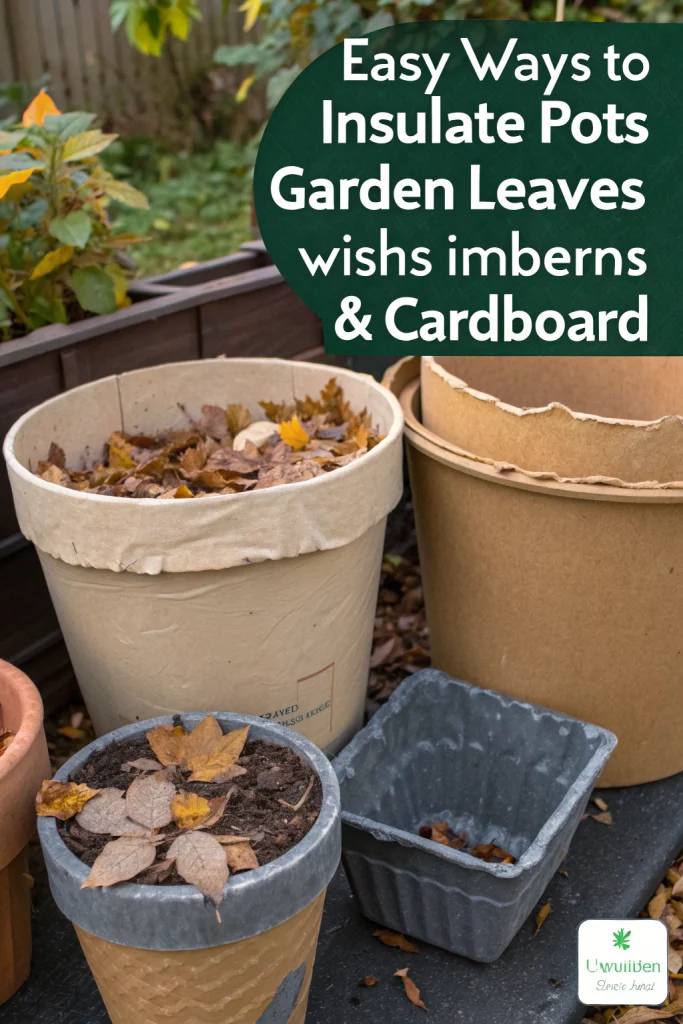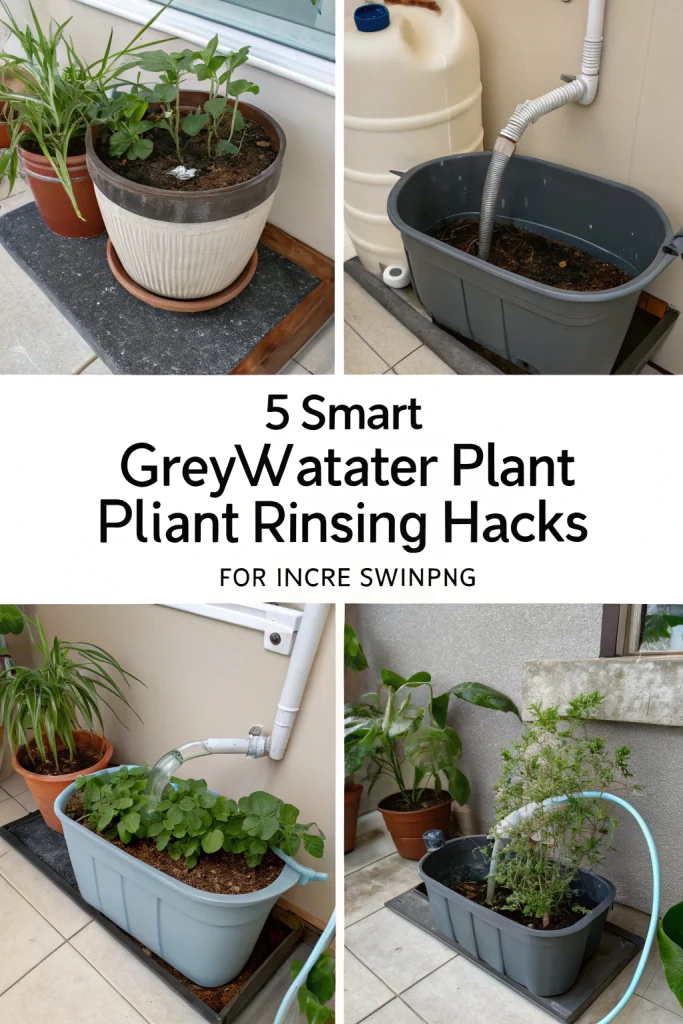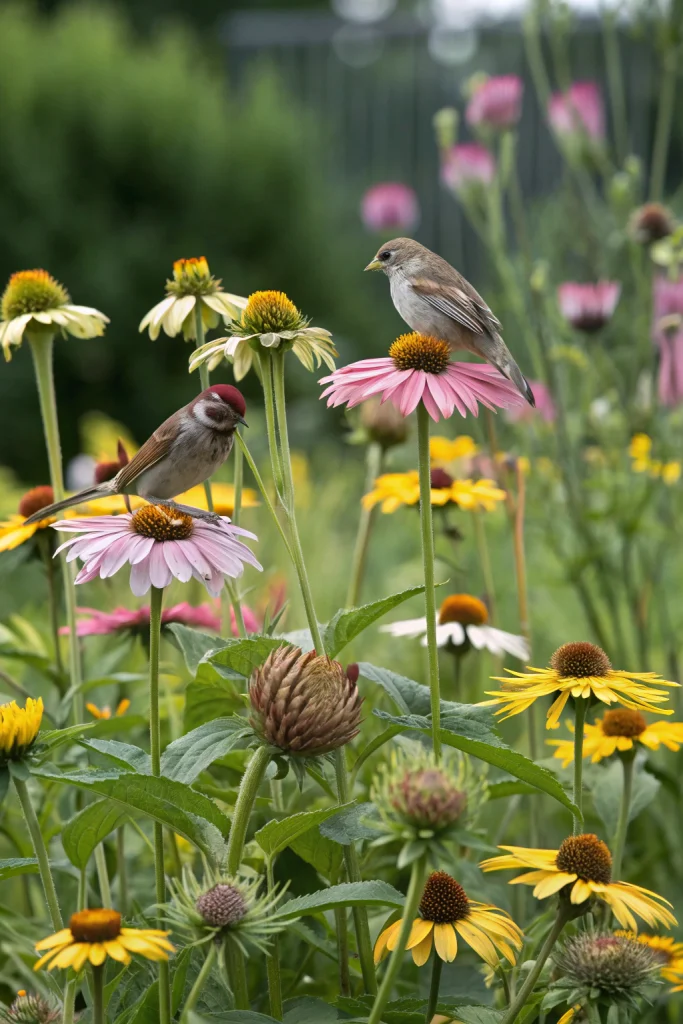Focus Keyword: Insulate, Pots, with, Cardboard
Target Audience: Eco-conscious gardeners, homesteaders, and those looking to save money and reduce waste.
Tone: Practical, encouraging, and informative.
Table of Contents
ToggleInsulate, Pots, with, Cardboard — Your Blueprint for Sustainable, Low-Cost Winter Gardening
Insulate, Pots, with, Cardboard blends practical, low-cost techniques with real environmental impact. Use these eco-first methods to reduce waste, save water, build living soil, and support pollinators—all while keeping your garden beautiful and productive through the cold season.
[lwptoc]
Why Insulate, Pots, with, Cardboard Matters This Season
Winter prep is when smart gardeners get ahead: leaves become mulch, rain becomes irrigation, and “waste” becomes soil food. With Insulate, Pots, with, Cardboard, you set resilient foundations now—so spring growth is faster, healthier, and cheaper.
Core Materials & Tools
- Dry leaves, shredded cardboard, twig cuttings (mulch & sheet-mulch layers)
- Compost setup (bin, bokashi, or worm tower for containers)
- Rain barrel with downspout diverter; watering can or soaker hose
- Reusable pots (terracotta/metal/wood) and sturdy seed trays
- Hand tools (stainless trowel, pruners, rake) and a simple sieve
Step-by-Step Method
Step 1 — Build a No-Dig Base with Leaves
Lay cardboard on bare soil, overlap edges by 10–15 cm, wet lightly, then add 5–10 cm of shredded leaves and a thin layer of compost. This suppresses weeds, buffers moisture, and jumpstarts fungi for spring.
Step 2 — Capture Rain & Water Smarter
Install a rain barrel and water early. Group pots by water needs, mulch containers with leaves, and add saucers with gravel to reduce evaporation.
Step 3 — Feed Soil Life Naturally
Start a cold compost (leaves + coffee grounds) or use bokashi indoors, then trench it into resting beds. Sieve last year’s leaf mould to craft a silky seed mix for early sowings.
Step 4 — Balance Pests with Habitat
Keep select seed heads for winter birds; bundle stems into a habitat corner with sticks/leaves. Use mild soap, neem, or garlic sprays only when necessary—companion plant where possible.
Environmental & Cost Impact
With Insulate, Pots, with, Cardboard, you can divert many bags of leaves from landfill, cut irrigation needs via mulch and rain capture, and increase garden biodiversity with simple habitat zones.
Advanced Eco Hacks
- Charge homemade biochar in compost tea before mixing into beds.
- Swap plastic seed trays for soil blocks.
- Try milk-jug winter sowing for hardy perennials and salad greens.
- Insulate patio pots with cardboard jackets and leaf fill to protect roots.
Design & Aesthetics (Keep It Beautiful)
Blend sustainability with style: recycled-wood edges, mossy planters, and warm solar path lighting for a cozy Nordic feel. Choose a restrained palette and repeat textures for cohesion.
Common Mistakes to Avoid
- Using peat moss (unsustainable—choose leaf mould instead)
- Over-tidying (remove hazards, keep habitat zones for allies)
- Watering at midday (evaporation losses; water early/late)
- Heavy fertilizing in cold soils (feed microbes, not just plants)
Storage & Winter Care
Cover rain barrels, aerate compost, label leaf-mould pens by date, and oil cleaned tools. Store dry cardboard flat for quick sheet-mulch builds when beds become free.
Conclusion
Insulate, Pots, with, Cardboard proves greener gardening is easier, cheaper, and more resilient. Start with leaves, water capture, soil life, and habitat—your spring garden will repay you with vigor and fewer inputs.
FAQ
- Can I start now? Yes—focus on leaves, rain capture, no-dig prep, and tool care.
- Only a balcony? Use worm towers/bokashi in planters and insulate pots with cardboard + leaves.
- Special tools required? No—rake, pruners, and a basic bin (or bags) are enough.
- Science behind this? See resources below.
- Healthline — Growing food in limited space
- Harvard T.H. Chan — Plate & Planet (sustainability)
- Medical News Today — Health benefits of gardening

The journey towards a more sustainable garden doesn’t require a complete overhaul or heavy investment. Often, the most impactful changes come from small, deliberate actions that harness nature’s inherent processes. The philosophy behind Insulate, Pots, with, Cardboard is precisely that: utilizing readily available, often discarded materials to create a flourishing, resilient garden ecosystem. It’s about working *with* nature, not against it, to achieve abundant results.
Understanding the Magic of Cardboard Insulation
Cardboard, often overlooked as mere waste, is a surprisingly versatile and effective tool in sustainable gardening. When used to Insulate, Pots, with, Cardboard, it acts as a phenomenal thermal buffer. Potted plants, unlike those in the ground, are highly susceptible to temperature fluctuations. Their roots are exposed on all sides, making them vulnerable to both freezing in winter and overheating in summer. A simple cardboard layer around your pots creates an air pocket, slowing down heat transfer significantly. This means less root stress, more consistent soil temperatures, and ultimately, healthier plants. Moreover, cardboard is biodegradable, breaking down over time to enrich the soil with organic matter, a stark contrast to synthetic insulations.
The Unrivaled Power of Leaves in Your Garden
Fallen leaves are gold for the eco-conscious gardener. Instead of bagging them for municipal collection, bring them back into your garden cycle. When you choose to Insulate, Pots, with, Cardboard and then fill the space between the pot and the cardboard with leaves, you amplify the insulation effect. Leaves also decompose into a rich, dark material known as leaf mould, which is an incredible soil amendment. Leaf mould improves soil structure, water retention, and provides a slow release of nutrients. Using leaves as mulch on the surface of your pots also suppresses weeds, conserves moisture, and protects the soil from erosion. It’s a truly circular system that minimizes waste while maximizing garden health.
The Financial and Environmental Savings
One of the most appealing aspects of the Insulate, Pots, with, Cardboard strategy is the significant reduction in costs and environmental footprint. Think about it: instead of buying expensive potting soil every season, you’re building your own nutrient-rich compost and leaf mould. Instead of paying for chemical fertilizers, you’re brewing compost tea. Instead of replacing frost-damaged plants, your insulated pots keep them thriving. The cardboard itself is often free, sourced from packaging. Leaves are abundant and free every autumn. This approach dramatically cuts down on landfill waste, reduces your reliance on fossil fuel-derived products, and conserves precious resources like water due to improved soil moisture retention.
Designing Your Pot Insulation System
Implementing the Insulate, Pots, with, Cardboard method is straightforward. For smaller pots, you can simply wrap several layers of corrugated cardboard around the pot, securing it with twine or biodegradable tape. For larger patio pots or those that stay outdoors year-round, consider constructing a cardboard ‘jacket.’ This involves cutting larger pieces of cardboard that can be folded to create a square or circular enclosure around the pot. Leave a gap of 2-5 cm between the pot and the cardboard, and fill this space with dry leaves, straw, or even shredded paper. Ensure the cardboard doesn’t sit directly on wet ground, which can accelerate its decomposition prematurely. Elevating the pot slightly on pot feet can also aid in drainage and further insulation.
Beyond Insulation: Cardboard’s Role in Soil Building
The utility of cardboard extends far beyond just insulating pots. As highlighted in Step 1 of our method, cardboard is a cornerstone of no-dig gardening. Laying it down on garden beds suppresses weeds by blocking light, and as it breaks down, it adds valuable carbon to the soil. This attracts earthworms and beneficial microorganisms, improving soil aeration and structure. When you Insulate, Pots, with, Cardboard and then eventually compost or bury that cardboard, you contribute directly to the long-term health and fertility of your garden soil. It’s a key “brown” ingredient for your compost pile, balancing out the “greens” like kitchen scraps and grass clippings.
Rainwater Harvesting: A Critical Component for Resilience
Water is a precious resource, and integrating rainwater harvesting into your gardening practice is a game-changer. The simple act of installing a rain barrel attached to a downspout can significantly reduce your municipal water usage for gardening. Rainwater is also naturally soft and free of chlorine and other chemicals often found in tap water, making it superior for your plants. When you Insulate, Pots, with, Cardboard and use mulches, your pots require less frequent watering, meaning your collected rainwater stretches even further. Consider linking multiple rain barrels for greater storage capacity, ensuring you have water even during dry spells.
The Art and Science of Composting
Composting your organic waste is perhaps the single most impactful action a gardener can take for environmental sustainability. Whether it’s a traditional compost bin, a speedy bokashi system, or an indoor worm tower for apartment dwellers, transforming kitchen scraps and garden waste into nutrient-rich humus closes the loop on your garden’s nutrient cycle. When you implement methods like Insulate, Pots, with, Cardboard, you are already thinking about resource efficiency, and composting naturally aligns with this. The compost you create then becomes the ultimate plant food, eliminating the need for synthetic fertilizers that can harm soil life and runoff into waterways.
Nurturing Biodiversity: Inviting Allies to Your Garden
A truly healthy garden is a bustling ecosystem, not just a collection of plants. By choosing to Insulate, Pots, with, Cardboard and other natural methods, you’re already creating a more welcoming environment for beneficial insects and wildlife. Leaving seed heads on plants provides food for winter birds, while bundles of hollow stems create vital nesting sites for solitary bees. Diverse plantings, especially native species, attract a wider array of pollinators and predatory insects that keep pest populations in check. Moving away from chemical pesticides is crucial, as these indiscriminately kill both pests and their natural enemies. A balanced approach means accepting a certain level of pest activity, knowing that beneficials will eventually catch up.
Winter Sowing and Cold Frames: Extending Your Season
The principles of insulation and protection crucial for you to Insulate, Pots, with, Cardboard can be extended to techniques like winter sowing. This method involves planting seeds of hardy annuals, perennials, and cold-tolerant vegetables in recycled containers (like milk jugs) outdoors during winter. The containers act as miniature greenhouses, protecting seeds from harsh weather while allowing them to experience natural temperature fluctuations necessary for germination. Similarly, a DIY cold frame (as linked in our internal resources) provides a protected environment for early spring plantings or overwintering tender greens, drastically extending your growing season without the need for heated greenhouses.
The Long-Term Benefits of Building Living Soil
Every step you take in implementing Insulate, Pots, with, Cardboard strategies contributes to the health of your soil. Healthy soil is not just dirt; it’s a complex, living ecosystem teeming with bacteria, fungi, protozoa, nematodes, and earthworms. These soil microbes are responsible for breaking down organic matter, cycling nutrients, and making them available to plants. By avoiding tilling, adding organic matter (like leaf mould and compost), and eschewing harsh chemicals, you foster this microbial life. Over time, your soil becomes more fertile, better at retaining water, and less prone to erosion, leading to a garden that is increasingly self-sustaining and resilient.
Aesthetics and Practicality in Harmony
Sustainable gardening doesn’t mean sacrificing beauty. In fact, many eco-friendly practices can enhance the aesthetic appeal of your garden. A rain barrel can be adorned with artwork or integrated into a landscape feature. A compost bin can be discreetly tucked away or clad in attractive wood. When you Insulate, Pots, with, Cardboard, the cardboard itself can be hidden by a decorative outer pot, or you can choose to embrace its rustic charm, allowing it to subtly blend with natural textures. Recycled materials, when thoughtfully incorporated, can add unique character and a sense of history to your garden space, creating a haven that is both productive and visually pleasing.
Beyond the Garden: A Holistic Approach
The lessons learned from implementing practices like Insulate, Pots, with, Cardboard often extend beyond the garden gate. This approach fosters a mindset of resourcefulness, mindful consumption, and a deeper connection to natural cycles. It encourages us to look at “waste” as a potential resource and to appreciate the intricate web of life that sustains us. Embracing sustainable gardening is not just about growing plants; it’s about cultivating a more harmonious relationship with our environment, one leaf, one cardboard box, and one thriving plant at a time. The benefits ripple outwards, impacting our health, our communities, and the planet as a whole.
Overcoming Challenges and Continued Learning
Like any endeavor, sustainable gardening may present its challenges. You might encounter an unexpected pest outbreak, or your compost pile might not break down as quickly as anticipated. The key is to view these as learning opportunities. Research solutions, ask experienced gardeners, and observe your garden closely. The internet, books, and local gardening clubs are invaluable resources. For example, if you find that using cardboard to Insulate, Pots, with, Cardboard isn’t enough in extremely cold conditions, you might explore additional layers of bubble wrap inside the cardboard sleeve, or move the pots to a more protected location. Continuous learning and adaptation are fundamental to successful eco-gardening. There is always something new to discover, a better way to do things, or a new plant to try. Embrace the journey of discovery and allow your garden to evolve with your growing knowledge and understanding.
Final Thoughts on Cultivating Resilience
The overarching theme of Insulate, Pots, with, Cardboard and all related sustainable gardening practices is resilience. A resilient garden is one that can withstand environmental shocks, adapt to changing conditions, and continue to produce without excessive external inputs. By building healthy soil, conserving water, fostering biodiversity, and protecting your plants with simple, natural methods, you are creating a system that is robust and self-sustaining. This not only benefits your garden but also contributes to greater ecological stability and food security. Start small, experiment, and enjoy the process of nurturing a garden that gives back to you and the planet.



